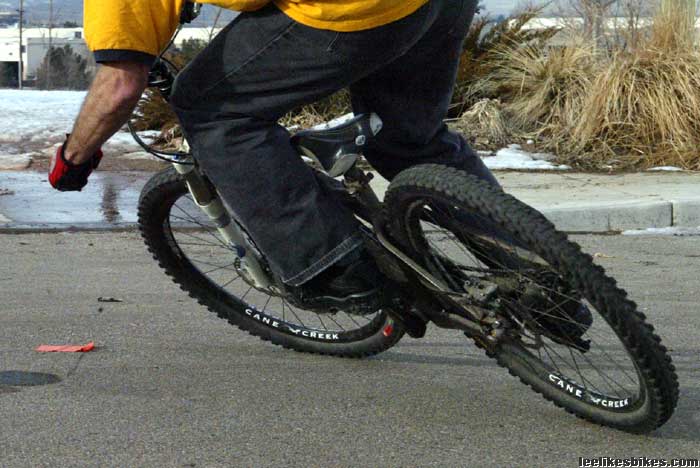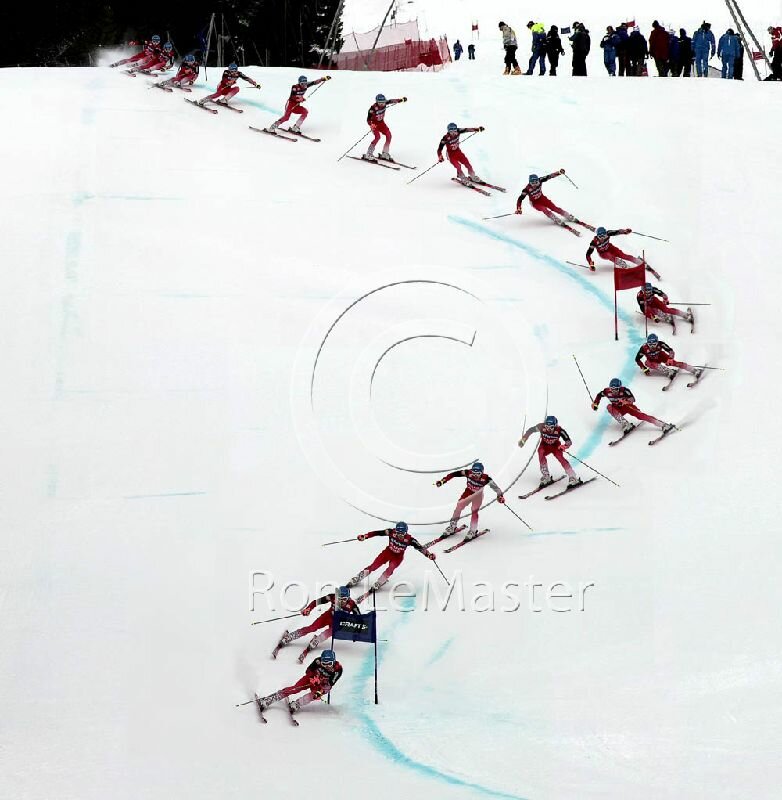There’s a flashlight in my belly button

Could you clarify one thing about the flashlight for me.
What I do not grasp so far is what the “flashlight – turning of the hips” does.
Judging from you remarks on skiing you know a thing or two about that as well. Being an enthusiastic skier myself, I have compared the position of carving a turn on skis with that on the bike. The only thing which seems to be different is the turning of the hips. As you surely know, during a turn on skis you try to keep your downward-pointing shoulder and hip back, so that you can keep the skis on their edges. So rotating the hips forward during a turn isn’t good on skis — why is it on the bike?
Or did I misunderstand something here?
Thanx a lot.
Ralf
Hey Ralf,
This is a good, smart question. I remember you posting it a while back and me red-flagging it to answer later, then I did some research … and it got forgotten. 100,000 emails a day, you know?
I like to think I know a few things about skiing. When I moved to Colorado with my ex wife, I dedicated myself to learning the art, science and kung fu of skiing. I found Ron LeMaster, a big-time skiing expert who lived down the street from me. He’s written lots of books. He lectures. He knows a few things. I guess he’s the Lee McCormack of skiing (or, more likely, I’m the Ron LeMaster of bikes)
His books are rad, as are his photo sequences shot at World Cup races. I don’t think he’ll mind if I post some from www.ronlemaster.com.
Thoughts:
 One of Ron Lemaster’s awesome photo sequences. Benjamin Raich – Aare 2006 – GS 2nd run |
1) Cornering on skis and bikes is extremely similar. A great skier can rip on bikes, once she relaxes. And vice versa.
2) Both are quite complex, and there are different schools of thought. Skiing is a more developed line of study, and you should see how dogmatic ski “experts” can be. I attended a lecture by Ron LeMaster at the Boulder Center for Sports Medicine about ski cornering, and — wow — people were openly disagreeing with him. He’s a lot more mature than I am, and his take was, “I’m not claiming to know anything. Here are pictures of the world’s best ski racers; let’s look at them and talk about what they are doing.” Pretty great.
3) The purpose of the flashlight in your belly button (on a bike) is to orient your hips through the turn, toward the next turn. This has lots of benefits including:
• Points your upper body (and head) where you’re going. The sooner you’re oriented toward the next turn, the sooner you can release this turn to your peripheral vision and the guidance centers of your brain.
• Adds energy to your turn. Imagine carving a turn on snow or water.
• Increases the clearance for you to lean your bike. Especially with a high seat.
Note: I got the “flashlight in my belly button” idea from a ski instructor — Chuck Martin at www.mogullogic.com.
 Look at my butt. Feel its power! This photo makes me feel self conscious, but it shows the hip turn pretty clearly. |
4) At the high level, when carving certain types of turns, ski racers are keeping their downhill hip back for, I think, two reasons:
• Keeps the inside ski in the lead.
• Allows greater angulation of the leg and ski. Greater angulation means tighter turns.
 One of Ron Lemaster’s awesome photo sequences. Kathrin Zettel – Aspen 2006 – GS 2nd run |
Looking at the last image in this photo sequence, the hips aren’t exactly pointing back. They’re just not driving all the way through the turn the way they would on a bike. We’re talking about a subtle difference.
4) For most skiers in most situations, I think you can turn skis the way you turn a bike. Hip and torso driving where you want to go.
I am no Ron LeMaster, and I know I’m asking to hear from the ski experts, but this makes sense to me. Thoughts?
Lee
Bummed: I haven’t skied in a few years. No time.
Know more. Have more fun!
Join the leelikesbikes mailing list:

Comments are closed.